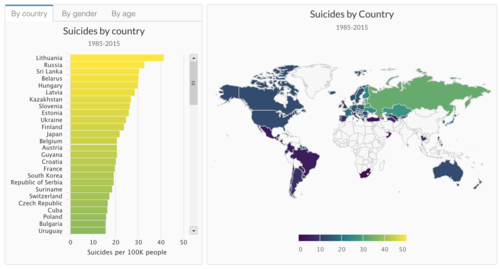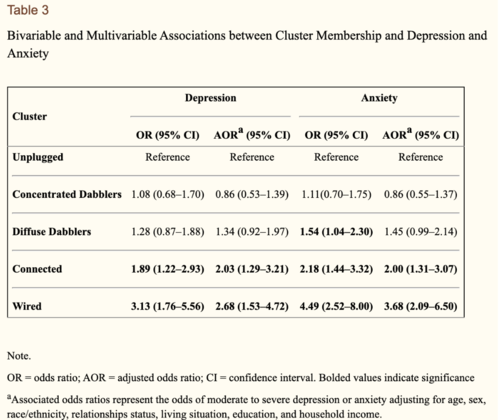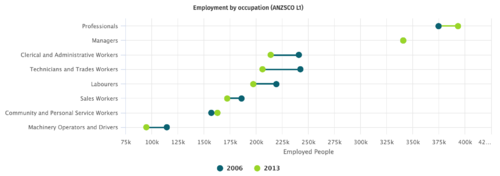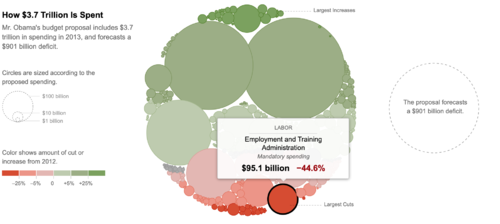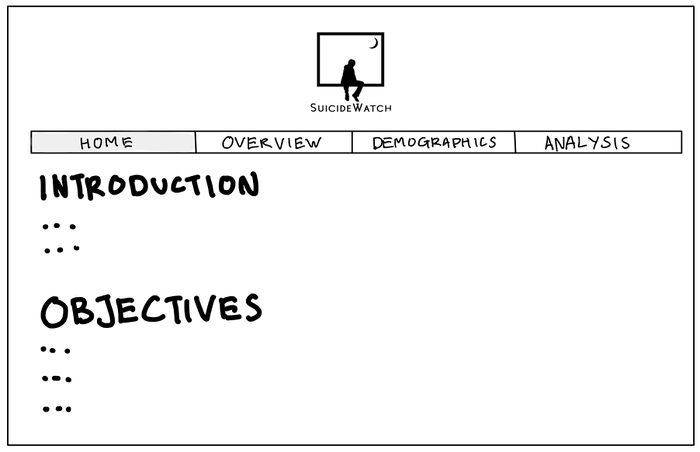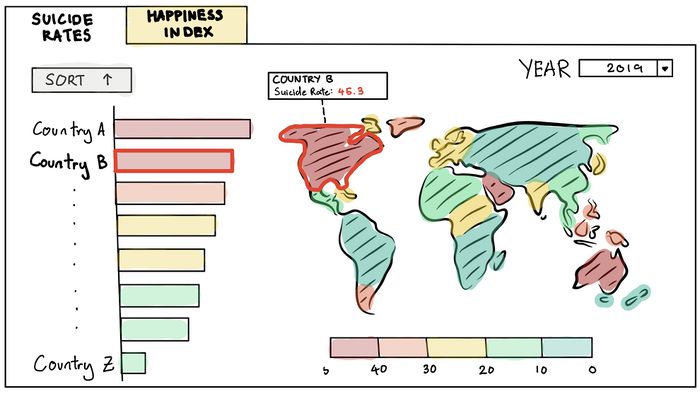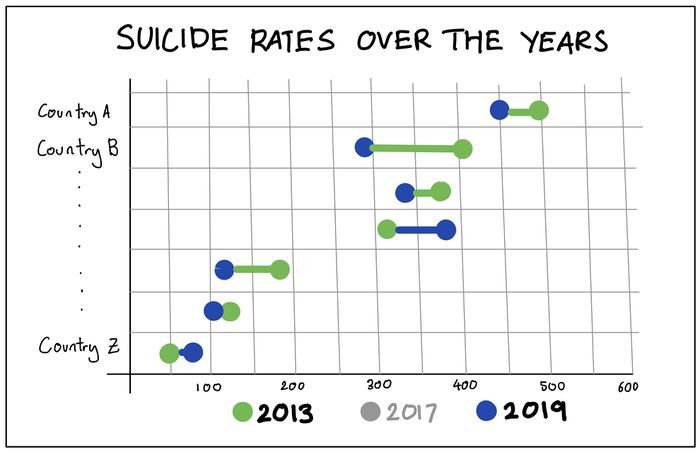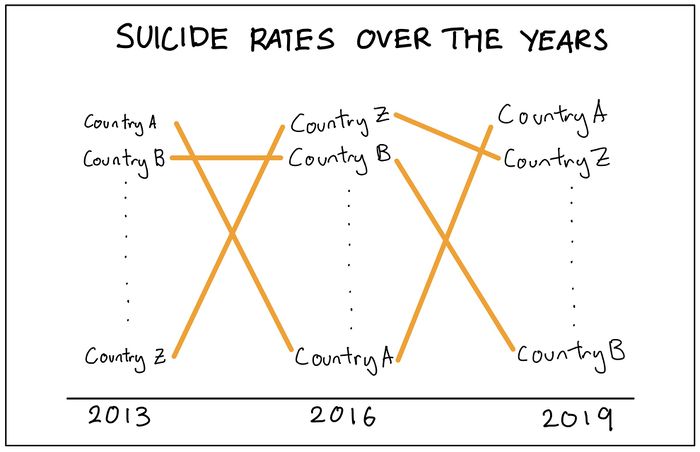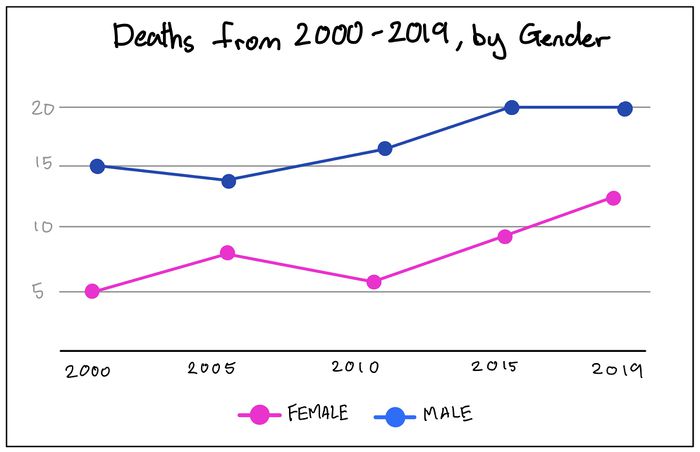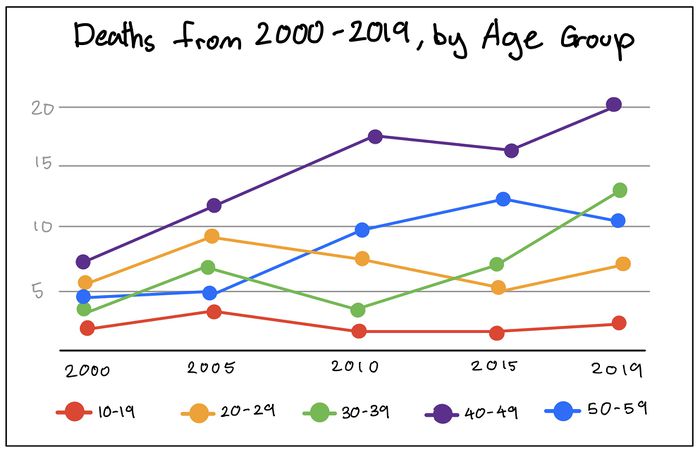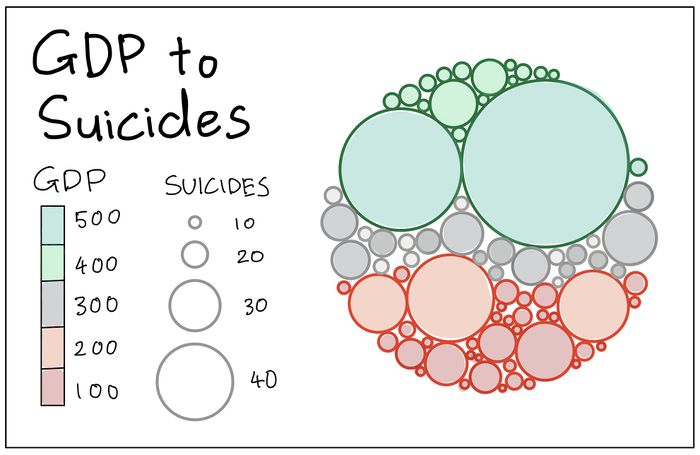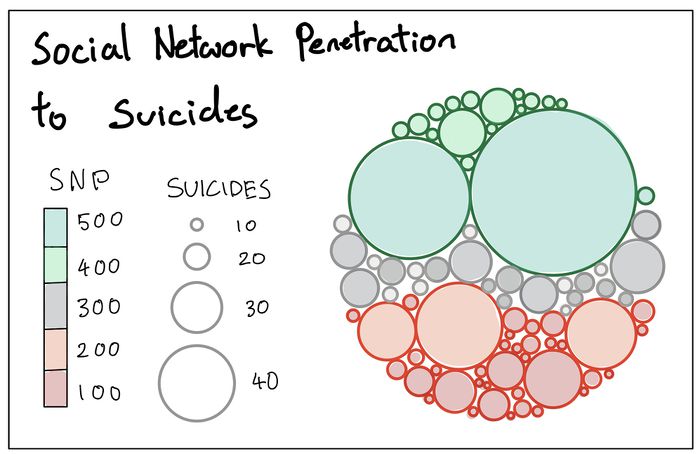SuicideWatch: Proposal
Version 1
|
Contents
PROBLEM & MOTIVATION
Suicide rates are at their highest since WWII. Close to 800 000 people die due to suicide globally every year, which is one person every 40 seconds. Suicide is a global phenomenon and occurs throughout the lifespan. In Singapore, suicide is the leading cause of death for those aged 10-29. Females are more likely to be diagnosed with depression and attempt suicide, but males accounted for more than 71% of all suicides in Singapore in 2018. The steady suicide figures signal the presence of an unseen epidemic, one that silently tips people over the edge. While most push the blame to depression, there is no one size fits all explanation when it comes to suicide. Can suicide rates be simply mapped to the Happiness Index or GDP per Capita? Or is there more than meets the eye?
OBJECTIVES
In this project, we are interested in creating a visualization that helps analysts perform the following:
- Explore suicides rates in each country
- Explore if there is a correlation between the suicide rate and happiness index
- Explore the suicide demography of each country
- Establish possible correlations of each country’s suicide with its GDP and the include of social media / technological advancements
SELECTED DATASETS
| Dataset/Source | Data Attributes | Why this Dataset? |
|---|---|---|
(https://www.kaggle.com/russellyates88/suicide-rates-overview-1985-to-2016) |
|
|
(https://worldhappiness.report/ed/2019/) |
|
|
(https://data.worldbank.org/indicator/ny.gdp.mktp.cd) |
|
|
(https://ourworldindata.org/internet) |
|
|
RELATED WORKS
| Example | Takeaways |
|---|---|
|
|
We get inspiration from this dashboard, which utilises the same set of data for world suicide statistics. |
|
|
This paper supports our hypothesis on use of social media leaders to depression and suicide. The research results shows that membership in 2 clusters – “Wired” and “Connected” – increased the odds of elevated depression and anxiety symptoms (AOR = 2.7, 95% CI = 1.5–4.7; AOR = 3.7, 95% CI = 2.1–6.5, respectively, and AOR = 2.0, 95% CI = 1.3–3.2; AOR = 2.0, 95% CI = 1.3–3.1, respectively). |
DESIGN INSPIRATIONS
| Example | Takeaways |
|---|---|
|
|
Pros:
Cons:
|
|
|
Pros:
Cons:
|
PROPOSED STORYBOARD
Our proposed application will consist of four pages:
LANDING PAGE
| Proposed Storyboard | Description |
|---|---|
|
OVERVIEW
This page will provide the viewer with an overview of global suicide rates and overall happiness scores.
| Proposed Storyboard | Description |
|---|---|
|
|
|
|
|
|
|
|
|
DEMOGRAPHICS
| Proposed Storyboard | Description |
|---|---|
|
|
|
SOCIOECONOMIC ANALYSIS
This page explores possible relationships between socioeconomic factors and suicide rates.
| Proposed Storyboard | Description |
|---|---|
|
|
|
KEY CHALLENGES
| Challenge | Mitigation |
|---|---|
|
The team is new to data visualization and R Shiny |
|
|
Suicide data is not very accessible as it is a sensitive social issue |
|
|
Tight timeline for the semester |
|

